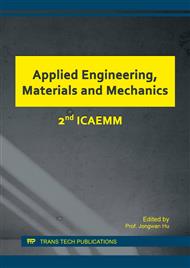p.251
p.256
p.261
p.266
p.271
p.279
p.286
p.293
p.303
Film Cooling Performances at Different Turbulence Intensities Using Conjugate Heat Transfer Analysis
Abstract:
This study presents a numerical investigation of cooling performances of a modified vane of the film-cooled vane reported by Timko (NASA CR-168289) at different mainstream turbulence intensities (Tus). A 3D conjugate heat transfer (CHT) analysis with SST k-ω turbulence model in FLUENT V.15 is used. Three different mechanisms in CHT analysis, i.e. fluid flow, heat convection between solid surfaces and flowing fluid in an external mainstream and internal cooling passages, and heat conduction within the vane structure, are simultaneously considered. Numerical results are conducted in terms of overall cooling effectiveness at Tu=3.3, 10, and 20%. Comparison between overall cooling effectiveness and film effectiveness under adiabatic assumption is discussed at the three Tus, also. The findings of this research indicate the following phenomena: 1) overall cooling effectiveness decreases with Tu, and this effect on the pressure side (PS) is stronger than that on the suction side (SS) in general. 2) By comparison with adiabatic film effectiveness, the level of overall cooling effectiveness in most regions is higher and more uniform than that of adiabatic film effectiveness for all three Tus. 3) In the leading edge (LE), when Tu increases, near the exits of film holes overall cooling effectiveness deteriorates, but adiabatic film effectiveness improves. Furthermore, a large area with relatively low overall cooling effectiveness is able to move with Tu in the LE region.
Info:
Periodical:
Pages:
271-278
Citation:
Online since:
October 2017
Authors:
Price:
Сopyright:
© 2017 Trans Tech Publications Ltd. All Rights Reserved
Share:
Citation:


